Monaka with crispy skin and red bean paste stands out for its elegant sweetness. There are so many types from the famous “seppuku monaka”, which is made of skin and red bean paste, to “ice monaka” and “ochazuke monaka”, “peanut monaka”. But do you know what does the original version look like? Surprisingly, the origin of it is actually something different from today. This time, we will tell you about the origin and history of this sweet!
What is Monaka?
The monaka is a Japanese confectionery of red bean paste sandwiched between mochi or rice flour skins. In Japan, locals called this skin, “skin seed, confectionery seed, and monaka seed.” Monaka seeds have a faint aroma of the sweetness of rice, but they don’t assert themselves, so they go well with any dish. The crunchy texture of the monaka seeds and the cuteness of their appearance will bring out the main ingredients even more.
Etymology
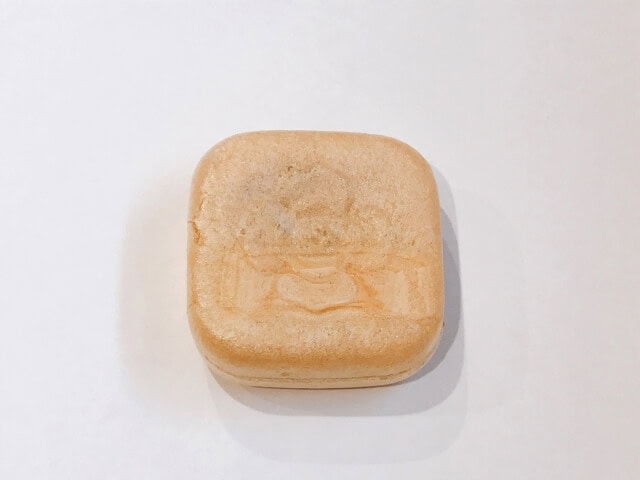
Court nobles who knew the poem by MINAMOTO no Shitago in Shui Wakashu (Collection of Gleanings of Japanese Poems) (volume 3, autumn 171) uttered the word ‘monaka no Tsuki (moon in the middle) in their conversation as they saw white. Round rice cake sweets were in a moon-viewing banquet held in the court. Thus, they used the word ‘Monaka no Tsuki’ as the sweets’ name. However, when those in a non-circular shape came into the market later, they were called simply ‘monaka.’
Monaka History
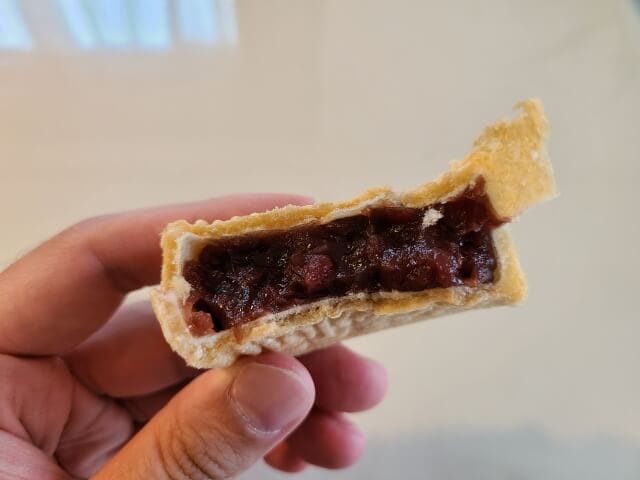
The origin of the name monaka is more than 1000 years old, from the Heian period. Originated from a story about a poem by Minamoto no Shitago, who is famous as an editor of Shui Wakashu. At the moon-viewing banquet in the Imperial Court, they served the sweets when composing this poem were thin, round mochi sweets that resembled the harvest moon of the mid-autumn season, so they were called ‘Monaka no Tsuki.’ It is said to have originated from
The origin of present-day monaka is a sweet called Monaka no Tsuki. They sold this at the senbei shop in Yoshiwara during the mid-Edo period. Locals kneaded the glutinous rice flour with water, steamed it, rolled it out thinly, cut it into round shapes, baked it, and then sprinkled it with sugar. At that time, they do not include red bean paste like it is now. After that, the one with bean paste in it began to be sold, and the one with bean paste in it became the mainstream.

Also, there is a theory that the monaka came to be called monaka instead of saichu. Which means the centre, because the bean paste is in the middle. Since the Meiji period (1868-1912), mould technology progressed, and locals can make various types of monaka, from the orthodox round and square patterns to patterns such as chrysanthemums and plums, as well as animal shapes. Nowadays, there are not only bean pastes, but also unusual varieties such as chestnuts, gyuhi, rice cakes, and ice cream.
Monaka Recipe
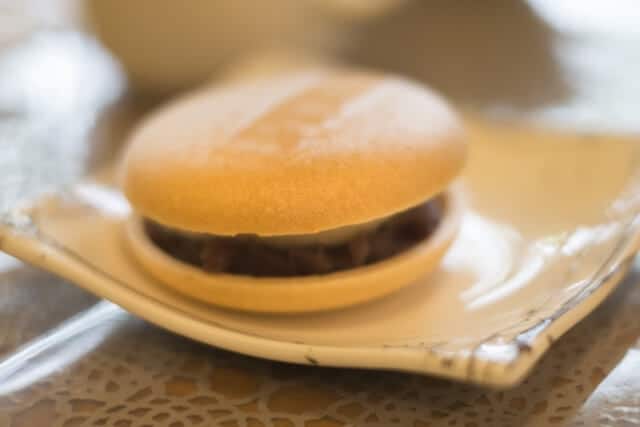
Monaka Ingredients
| Ingredients of Monaka kawa (skin) for 3 persons | Measurements |
|---|---|
| Shiratamako | 42g |
| Cornstarch | 14g |
| Water | 50g |
| Salad oil | 3g |
How to make Monaka kawa (skin)
Grease the mold. For the madeleine mold, paint one sheet on the front and the other on the back. Apply 4 canelé molds to the inside and 4 to the outside.
Mix shiratama flour and cornstarch, add water and knead. Adjust the dough so that it is slightly looser than the shiratama dango dough. Then, lightly coat the mold with the batter. (Here, preheat the oven to 230℃).
Cover the coated mold with another mold, press them tightly together, and fasten the two together with clothespins. It is better to use a lot of clothespins.
In addition, when covering the mold, the canelé mold overflowed with a lot of fabric. Place in preheated oven and bake for 12 minutes.
Once baked, remove the clothespins while still hot and remove the dough from the mold. (At this point, if the dough is still sticky, it’s undercooked. Let’s bake it for another 2-3 minutes.)
When it comes out of the mold cleanly, the monaka skin is ready.

| Ingredients of Monaka azuki for 6 persons | Measurements |
|---|---|
| [Grain bean paste] | |
| Adzuki beans | 200g |
| Granulated sugar | 300g |
| Salt | 2g |
| Water | 1000g |
| [Agar liquid] | |
| Ito agar | 1g |
| Water | 710g |
| Starch syrup | 30g |
How to make Monaka Ann
Put the washed adzuki beans and water in a pot and put it on the fire. When it boils, reduce the heat to medium, and when the colour of the broth becomes darker, drain it into a colander. Discard the boiling water and wash the adzuki beans.
Put the azuki beans and water in a pot and bring to a boil. When the boiling water becomes less, add a cup of water and boil.
Repeat the step twice, and when the adzuki beans become soft, add the sugar in 3-4 portions and simmer. Add salt and reduce the heat to low and simmer until the water evaporates. Then, soak the ito-agar overnight in water to soften it.
Add enough water to dissolve 5 in a pan and heat. Strain once melted. Lastly, add starch syrup and knead.
Health information of Monaka
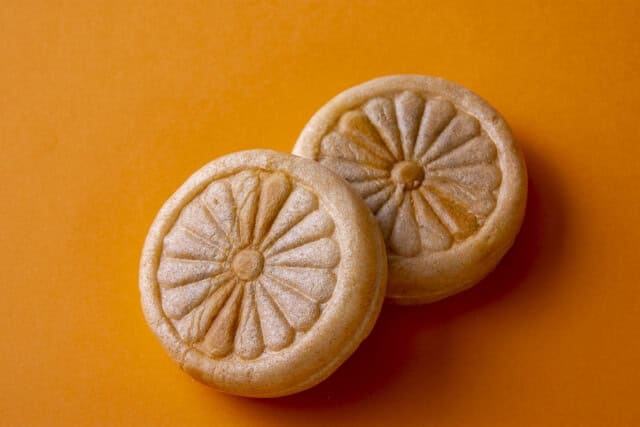
Monaka contains 284kcal per 100g and 63g of sugar. A bowl of white rice (150g) has 252kcal and 55.2g of sugar, so it has more calories than a bowl of rice. When converted per 100g, the calorie content of monaka is higher than that of other Japanese sweets. However, it is overwhelmingly lower than dorayaki and daifuku per piece, so there is little concern about getting fat.
Anko, which makes up 80% of monaka, is not only high in fiber. It contains saponin, which flushes out excess lipids, and polyphenols, which smooth the blood. It also contains a lot of iron, which is often deficient during dieting, and vitamins that help with fat metabolism. Although it is high in sugar, it is low in fat, so if you eat it properly, it contains plenty of nutrients that help you lose weight.
Different Variations of the Inside of Monaka
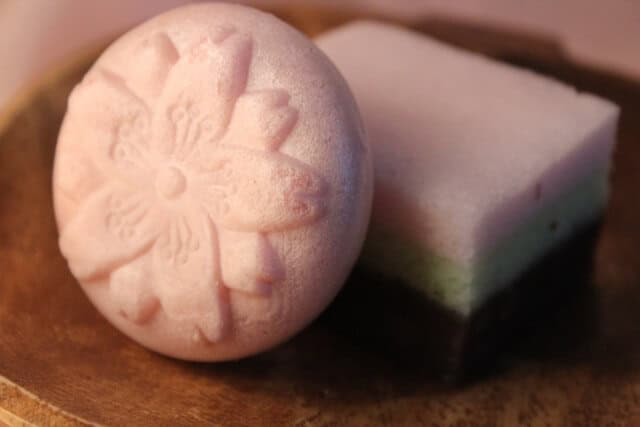
Lemon flavor monaka
A typical example is a cute bite-sized Japanese confectionery that incorporates flavors into bean paste, not bound by Japanese or Western styles. The bean paste inside contains ramune and lemon flavored bean paste, making it a unique kind of monaka that will make a great gift for children.
Melon-flavored Monaka
This type uses melons that are harvested all year round in greenhouses that use the heat of the hot springs, and they made the bean paste from white bean paste and bean paste and melon juice.
Monaka puffed chocolate
In February, department stores and sweets shops often start advertising chocolates for Valentine’s Day, and even in the middle there are chocolates instead of red bean paste. There is a shop that developed a new confection called “Mona Chocolat,” which combines monaka and chocolate using the skin of it. It has a crunchy middle skin and a puffed crunchy chocolate texture.
Various shapes of Monaka
One of the must-have sweets for those who love Japanese sweets. When you think of monaka, this is the standard monaka. Some have cute shapes, others are with red bean paste, and others have a big impact not only on their appearance but also on their names. Monaka has a strong Japanese image, but by combining it with Western ingredients, there are some that double the deliciousness. From animals to castle-shaped “monaka”, anything is possible.
Living things/nature
Cow, bear, rabbit, cat, monkey, deer, frog, sparrow, shellfish from fish, Rose, tulip, plum, gentian, Mt. Fuji
Food
Bean paste toast, shiitake mushrooms, radish, peanuts, chestnuts, bamboo shoots, edamame
Industrial/building system
Cars (several types available), streetcars, tires, riders, Castle, Tokyo Station, Izumo Dome
Ganso oyster monaka

Locals shaped the Ganso oyster like a real oyster. There are two sizes, the small size is about the size of a normal middle, and the large size is the palm size of an adult man.
Suzuka no Shunpu Rider
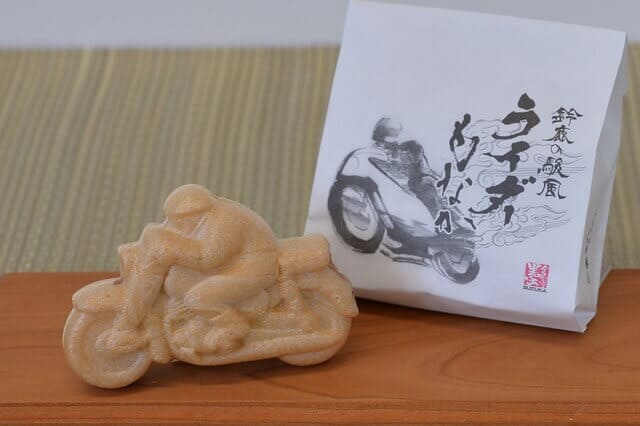
Toraya Katsuki’s Suzuka no Shunpu Rider Monaka is a type that mimics a galloping motorcycle made as a specialty representing Suzuka.
Turban Shell
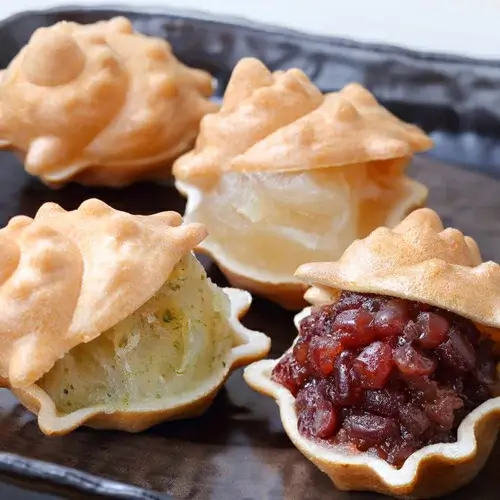
Seieido’s turban shell monaka is based on the motif of turban shells, a specialty of Minamiboso. It is a famous confectionery made from the seafood of Minamiboso by a first-class Japanese confectionery craftsman and a first-class Japanese confectionery craftsman.
Where to buy Monaka
Shinseido (御菓子司 新正堂)
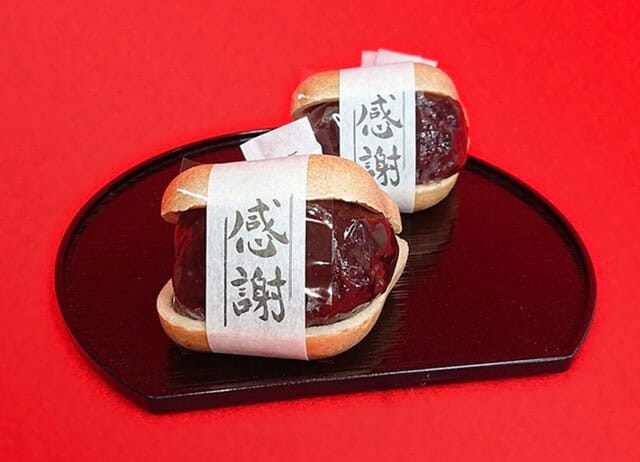
The shop make the filling of the bean paste from high-purity sugar with large crystals. They try to suppress the he sweetness of the gyuhi (gyuhi) for a more refreshing taste. The hachimaki in “Seppuku Monaka” is dignified. There is also a “thank you belt seppuku” where you wear a headband with “gratitude”. It is monaka with the hope that many stories related to “Chushingura” will reach the corners of people’s mouths.
Kuya (空也)
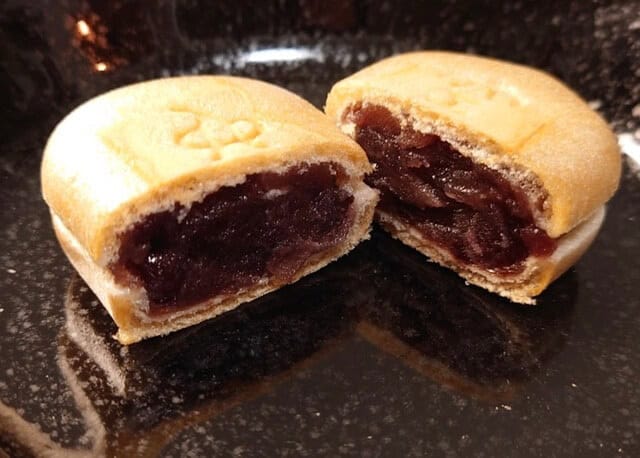
“Kuya Monaka” is a charred skin filled with homemade mashed adzuki bean paste. Many peole continues to love this shop, including many cultural figures. All are homemade, they fully-cooked the red bean paste and sugar without any additives or preservatives. The gourd-shaped shape is derived from Kuya Shonin’s nembutsu, which they relate it to the shop.
Shiromatsu (白松がモナカ本舗)
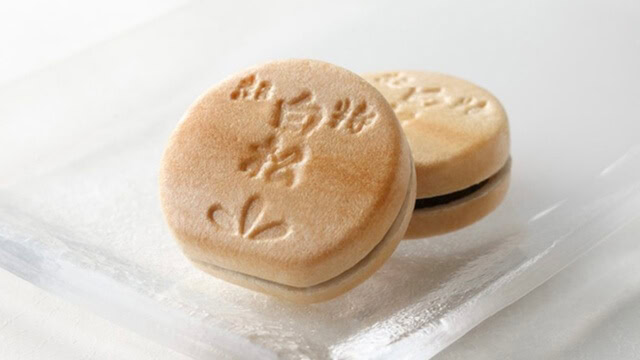
“Shiromatsu ga Monaka Honpo” was founded in 1932 as a monaka specialty store. The store make their monaka seed (skin) from glutinous rice harvested in the company’s own farm. Then, their bean paste is from Tokachi and Lake Toya in Hokkaido. You can enjoy the fine texture, the light sound and fragrant aroma, and the deep sweetness. There are four sizes: mini, small, medium, and large (the large size is made-to-order).
Takeaway

When it comes to Wagashi sweets made with Anko paste, what I introduce here, “Monaka (最中)” is a quintessential example whose origin dates back to the mid-Edo period, about 300 years ago. Monaka is a Japanese confectionery that consists of a bean paste wrapped in a thinly baked skin made of mochi or rice flour. The original form of this confectionery existed during the Muromachi period, and the modern style of wrapping the bean paste spread during the Edo period.
There are many types of Japanese wagashi or sweets that you can try once you go to Japan, such as Dango, Ichigo Daifuku, and Youkan.


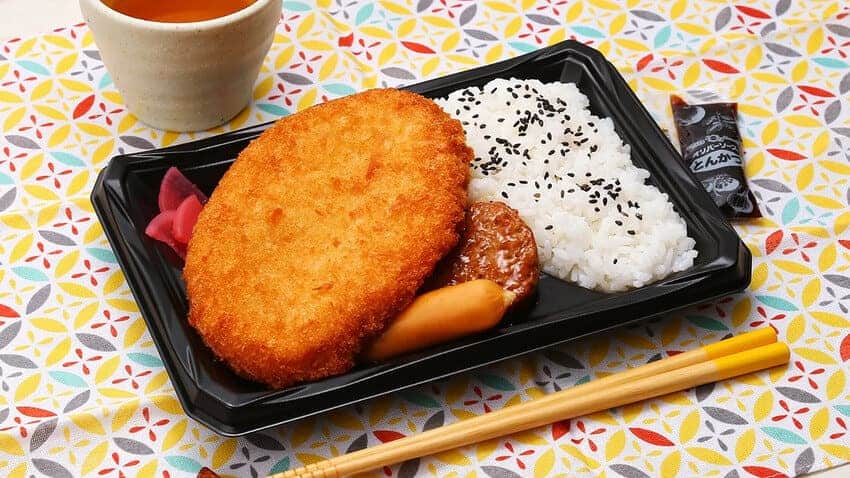



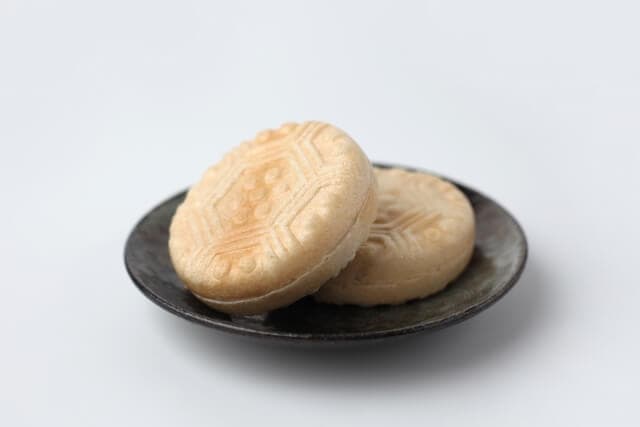
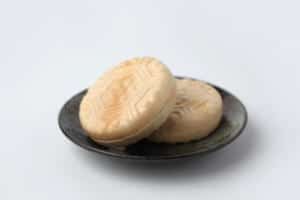
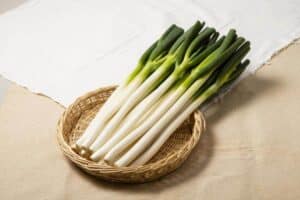
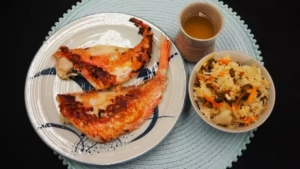
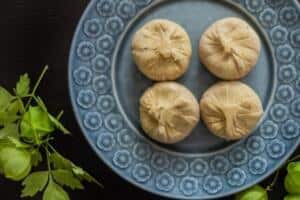
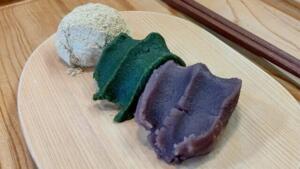
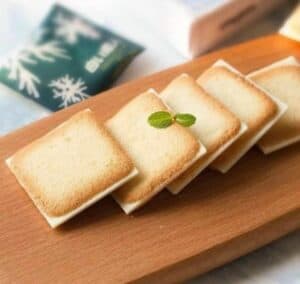
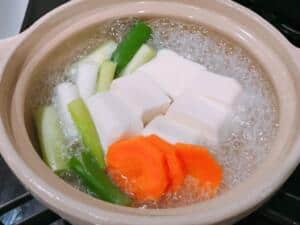
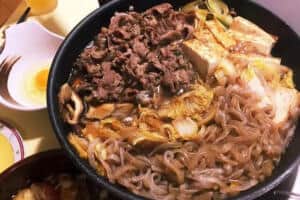
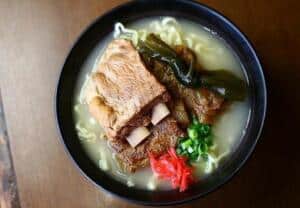
Comments